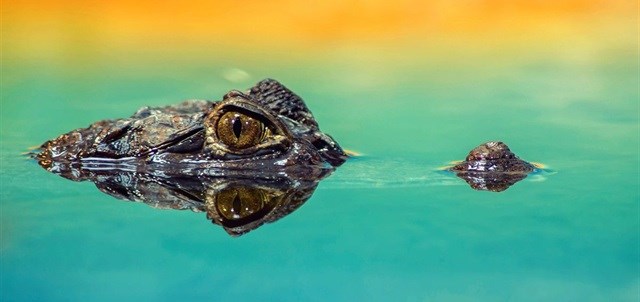
Top stories


LegalNigeria to implement new tax laws from January 1 despite calls for delay, Tinubu says
Camillus Eboh 1 day

Bharat Thakrar, CEO of WPP Scangroup, shared an evocative story he likes to tell clients about the challenges of working in Africa. I’ll call it the ‘Mara River’ story, as I can’t remember how he framed it exactly.
Every year over a million wildebeest migrate from Tanzania’s Serengeti to Kenya’s Masai Mara reserve in search of green pastures. On their journey, they need to cross the Mara River, which while impressive, is not too wide or deep that it could be considered a major obstacle for these big animals to cross. But, once in the water, they discover the fearsome crocodiles lying in wait.
Like this crossing, Bharat’s point was that doing business in Africa is not as easy as it might first appear. And multinationals need to be aware of the proverbial ‘Crocodiles of Africa’ when they are launching and building brands in local markets.

One of the reasons multinationals sometimes struggle to realise the opportunity that Africa promises, is their failure to take the time to really understand local market nuances. They have a global brand bible that has identified a universal human insight that “works for all consumers”. But in Africa, simple copy and paste strategies often don’t work. Just because two countries speak the same language doesn’t mean they share the same cultural understanding.
Virgin Mobile, a big player in the UK wireless communications was launched in SA, with some fanfare back in 2006, but failed to make significant inroads into the local market. The premium and aspirational appeal of the parent brand proved irrelevant to South Africans. The brand needed to prove itself like any other, and when basic product and services lagged behind established competitors, international brand ‘cache’ wasn’t much help.
Abey Mokgwatsane, CEO Ogilvy Group, pointed out that this failure to localise was not as much of an issue in the past, as many multinationals were able to dominate through better distribution and stronger trade relationships. They were simply more physically available, in more places, more often. The local alternatives were fragmented, often poorly branded and not easy to find.
But as mobile internet penetration has grown, so too have the options available to local consumers. Local brands have upped their game and as a result, more local brands have gained market share at the expense of international brands.
SAB’s acquisition by AB InBev was in part due to the former’s strong portfolio of local brands; Castle Lager in South Africa, Safari Larger in Tanzania or 2M in Mozambique, to name a few. SAB used this portfolio of to maximise relevance in each country.
By contrast SAB’s international brands Grolsch, Peroni and Miller, have gained less traction in Africa, in part due to their premium price, but also the challenges of connecting an American/European image to local drinkers.
Africa is not one country, which the conference panel acknowledged, but Chris von Sale, CEO JWT Africa, made an interesting counter argument, asking: “Have marketing professionals made Africa appear more complex than it needs to be? Are we scaring global clients away? Shouldn’t we focus on finding the commonalities between customers and markets?”
Our job, after all is often to simplify. This point is well made, but it seems that this risk is outweighed by the dangers of oversimplification.
Here are some lessons on how best to approach the localisation challenge:
Lesson 1 – A global promise needs a local expression: While brands should not stray too far from their core brand idea, it won’t resonate unless it has local relevance. Vodacom launched at a time when the country was taking its first steps as a democratic society, and played with this in its communications. But when the brand turned red and adopted the global brand positioning, it lost some relevance. The brand has regained traction by recapturing a local purpose that resonates with South Africans. This is best captured in the 2015 Summer Days ad that shows how technology can help South Africans collectively realise their potential – power to all of us.
Lesson 2 – Get your choice of product mix and channel right: Unilever’s powder detergent, Omo was the leading brand in Uganda, commanding close to 100% market share. But it lost ground to local brand Nomi when the latter was launched in bucket-like containers with handles that were popular with kids and offered convenience in comparison to sachets and packets. Nomi also focused distribution in smaller villages and up-country areas where competition was less fierce.
Lesson 3 – Be prepared to change visual codes rather than trying to change market: Jameson is a premium whiskey. Its positioning is linked to the idea of unpretentious premium; an idea developed in Europe. This translates into a visual aesthetic that focuses on natural and raw materials, and playful typography. This style was aspirational to European consumers in developed markets, but in South Africa where many consumers have come from, or still live in a ‘raw’ environment, this aesthetic doesn’t signal premium or luxury. The brand overcame these issues by reviewing local premium drivers and adopting materials and finishes that suggested a more refined expression of premium, while retaining an unpretentious feel.
Lesson 4 – Build local pride and aspiration: Absolut’s recent win at Cannes is well-deserved recognition for its ‘One Source’ collaboration with Khuli Chana, which nails the localisation challenge. ‘One Source’ is an intrinsic claim referencing all ingredients being sourced in one location - the Swedish town of Ahus. But this didn't resonate with African audiences. The ‘One Source’ campaign took this intrinsic and turned it into an extrinsic celebration of Africa as the ‘One Source’ of all creativity and it became a war cry of the African creative revolution currently underway. They started with an exclusive Khuli Chana Signature Edition Bottle, and then launched a documentary series, an EP, and a music video that went to number one on iTunes. It quickly became a cultural talking point and earned media to the value of R60.9m. The imagery, status and aspiration was all local, rather than international, but was still inherently true to the brand.